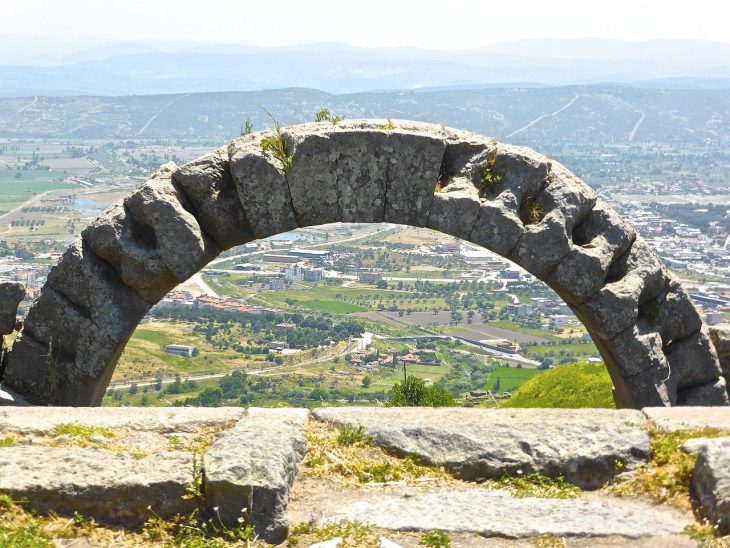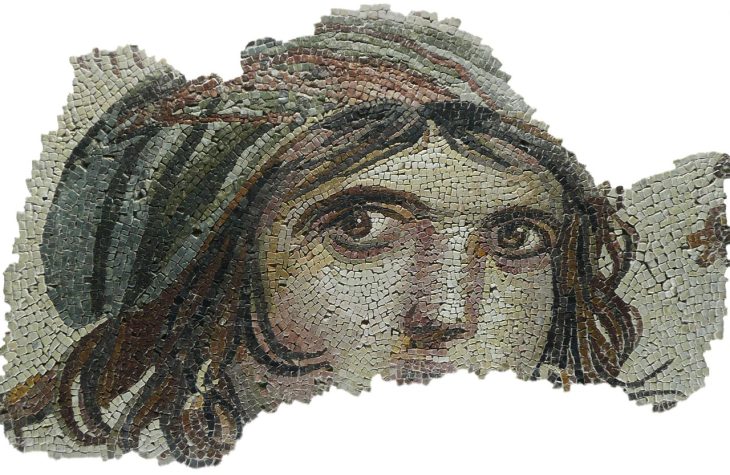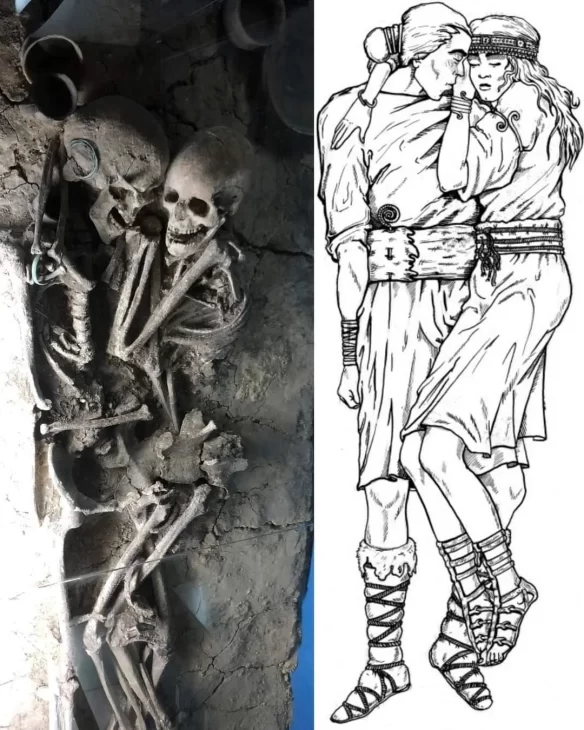A Boy and His Dog: How Archaeology is My Biggest Inspiration

Good afterevenmorn, Readers!
Once upon a time, a much younger me fell into an obsession… Well, several related obsessions, if I’m being honest. Prehistoric Anthropology and Archaeology dug its claws into my brain and would not let go. In what might have been a profound waste of money, I followed that obsession into university, acquiring a Bachelor’s Honours Degree in the subject, with a focus on Celtic Studies. I wrote a thesis that was four times as long as it needed to be (with permission). I wrote on the Continuity of Religious Iconography From the Upper Palaeolithic to the Pre-Roman Iron Age of the Atlantic Façade. Which is to say, basically, some religious beliefs and practices of the Iron Age Celts might just have had their origin in the pre-Celtic peoples of the Stone Age. That’s a lot to cover in just twenty pages, so I handed in eighty-three.
When I say I was/am obsessed, I absolutely meant it.

I had wanted to follow that obsession even further in a Master’s Degree and then onto a Doctorate, but I had no money, and was far too scared of my already accrued debt to willingly go further. As such, I’m not really working in my field of study. In fact, I’m nowhere near it. My day job is working as an accounting clerk. But that doesn’t mean I haven’t used my degree. I have. Sort of.
You can find me still pouring over news from the prehistoric anthropology and archaeology world. The information sits in my head and ferments, becoming part of the fabric of my imagination. Every so often, that information pops out in the form of a fictional story. Sometimes, there are things that are discovered after a story is written and out in the world that reflect the stories so very well. Let’s explore!

A Child and Their Dog
In 1994, Jean-Marie Chauvet discovered a cave in southern France later named for them (Chauvet-Pont-d’Arc). Inside, undisturbed, thanks in large part of a landslide that sealed off the cave, were tracks, cave art and animal figurines dating back to the palaeolithic. Of particular note were the fossilised footprints of an eight-year-old child dating back some 26,000 years. The child was barefoot and walking, making the tracks beside his remarkable. These were the tracks of a very large canine. Possibly a wolf. The child was not running, so there wasn’t any kind of pursuit. This discovery has led to some interpretations that this child and the large canine were quite possibly travel companions.
In 2010, I published a collection of short-stories all designed to be quite like fairytales or origin myths. Included in this anthology – The Dying God & Other Stories – was the story The Taming of Man I. In this tale, a young orphan boy is adopted by the ancestor of the Black Hounds; a giant, wolf-like dog named Cysgod Mawr (literally: The Great Hound). They travel together, away from the volcano responsible for the death of the boy’s parents and Cysgod Mawr’s pups both. It is the mythological telling of how wolves came to be domesticated.

The Melsonby Hoard
This is an example of something that was discovered long after a story was written that just fits with the story so very well. In 2017, I was lucky enough to have a historical fiction published by Renaissance Press. Set in Roman occupied Britain and Gaul, Daughters of Britain follows the eldest of Boudicca’s daughters. Boudicca, incidentally, in one of my favourite historical figures. If you want to hear me rant at length, just mention her. I will not shut up. I know that not everyone has heard of her, but in short, Boudicca was the queen of a powerful Celtic tribe in the south east of Britain called the Iceni or Magni Ceni. The long and short of it is that Rome treated her and her people horribly; claiming them annexed following the king’s death when they were, in fact, a client kingdom. That distinction matters. Anyway, Boudicca and her two daughters were not treated well. That is an understatement. Boudicca was stripped naked and publicly flogged. Her two daughters both very young were raped. In retribution, Boudicca gathered warriors from three separate tribes of the south east and went on a rampage around the region. So much so that there is a layer of blood, ash and broken pottery in the archaeological strata dubbed the Boudiccan Destruction Horizon.
She is goals.
Anyway, she was eventually defeated, and died either from her wounds of taking poison to avoid capture. We don’t know what happened to her daughters. So I kind of… made it up. I sent them north to the Caledonian Federation, where the eldest, Mederei, joined the resistance and continued her mother’s fight for British freedom. In my imagination, she remained in the north, fighting for the remainder of her life.
This year, a month ago in fact, there was a discovery near Melsonby, North Yorkshire, of an incredible Iron Age hoard, dating to roughly the time when Boudicca was about. Folks have immediately jumped to naming it the burial of Cartimandua (Cartimandua was queen of the Brigantes, a powerful northern British Celtic tribe in the region and a contemporary of Boudicca. She was also a pro-Roman ruler and thus deeply unpopular). Near as I’ve read, human remains have yet to be found, so a burial is not yet the verdict. This could be an impressive collection of grave goods. Or it could be something else. Either way, given the deep unpopularity of the queen, and the rescue of her by Roman auxiliaries when her ex-husband and his forces attacked the capital in order to take it from her (successfully, I might add), makes it unlikely that Cartimandua would be buried there. Certainly not with honours.
But an another woman could be. One who fought with her fellows for freedom against Roman imperialism… Boudicca’s eldest daughter. At least, that’s where my mind went the moment the news of “Cartimandua’s Burial Discovered” headlines hit my feed (no one’s even sure if it’s a burial yet, so that’s quite the claim to make).
A double aside about this story — I got the name Mederei from Trioedd Ynys Prydein (The Welsh Triads), which lists three female champions of the island of Britain: Llewei daughter of Seitwed, Rorei daughter of Usber, and Mederei Badellfawr (Mederei “Big Knee,” lol). The Trioedd Ynys Prydein are collections of things in triplicate, possibly the written down version of what was a mnemonic device designed to help remember the names of important people, and thus their important deeds and therefore the history of the island of Britain. Alas, for the most part, only the names survived. The deeds of most are lost (and I weep). But it’s an excellent place to go hunting for names, in case anyone gets stuck. Also, a fantastic source for early Arthurian myth.

The Petrykiv Couple
This one has informed the story I’m writing now (The Bear, which will be offered as a free serial when I’m done writing it… hopefully I’ll finish this year). This is a Bronze Age burial of a man and a woman in the Ukraine, near the town of Petrykiv. There is speculation that the woman elected to be buried with the man, possibly taking poison in order to join him in death. That’s not the part that caught my attention. What caught my attention, and thus my imagination, was the description of the burial:
It is a unique burial, a man and a woman lying there, hugging each other tight. Both faces were gazing at each other, their foreheads were touching. The woman was lying on her back, with her right arm she was tenderly hugging the man, her wrist lying on his right shoulder.
It’s such a sweet image, and it’s been in my head since I read about the discovery in 2018. Imagine being so in love with someone that you are buried together with them, forever in an embrace. Of course, such a burial requires an epic love story. I hope to deliver that. Of course, there are also demons and epic battles involved, because it’s me. But the kind of love between two people that would result in such a burial is the centre of this one.
For folks looking for inspiration for their fiction, particularly fantasy, I cannot recommend the academic fields of prehistoric anthropology and archaeology enough. So, I didn’t make a career out of my degree… Or, at least, not yet. If ever I manage to get to a point where my writing supports my life, then I can safely say that, at long last, I am using my degree. Not, you know, in the way I imagined when I graduated, but I wouldn’t be wasting my degree.
Are there any things in the realm of prehistory anthropology and archaeology that caught your eye and had you imagining stories to go with them? I’d love to hear about it!
When S.M. Carrière isn’t brutally killing your favorite characters, she spends her time teaching martial arts, live streaming video games, and cuddling her cat. In other words, she spends her time teaching others to kill, streaming her digital kills, and a cuddling furry murderer. Her most recent titles include Daughters of Britain, Skylark and Human. Her serial The New Haven Incident is free and goes up every Friday on her blog.
One geological event that captured my imagination is the (re)flooding of the Mediterranean when the Strait of Gibraltar re-opened around 5.3 million years ago. Imagine my delight when Julian May used it as a plot point in her Saga of the Pliocene Exile series, in the second book, The Golden Torc.